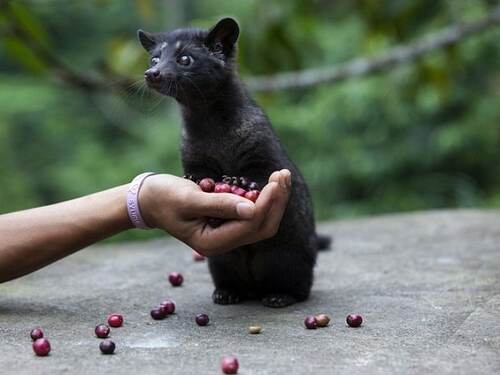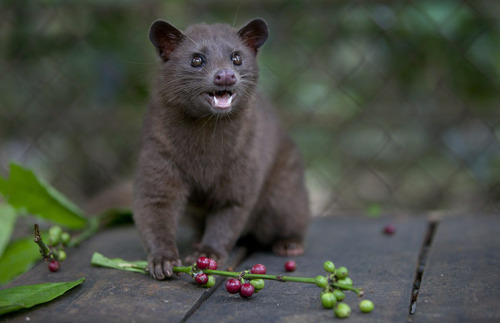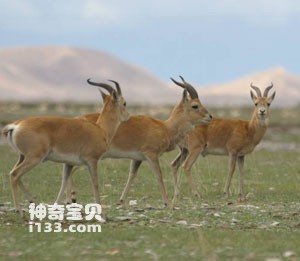When discussing unique and luxurious coffee, the conversation often turns to Kopi Luwak, also known as civet coffee. This extraordinary coffee is made from beans that have been eaten by a specific animal, digested, and then excreted before being collected, cleaned, and roasted. But what animal eats coffee beans and poops them out, and why has this unusual process captured the attention of coffee lovers around the world? In this article, we will explore the animal behind this intriguing process, the science of digestion, and the controversies surrounding this unique coffee.
1. The Asian Palm Civet: The Coffee-Eating Animal
The animal responsible for creating Kopi Luwak is the Asian palm civet (Paradoxurus hermaphroditus), a small mammal native to Southeast Asia. This nocturnal creature is found in tropical forests and plantations, where it enjoys a varied diet that includes fruits, small animals, and coffee cherries.

Why Civets Eat Coffee Beans:
Natural Diet: Asian palm civets are naturally attracted to ripe coffee cherries due to their sweet, fruity pulp. They consume the cherries whole, eating the fleshy fruit while the bean inside passes through their digestive system.
Selective Eating: Interestingly, civets tend to choose only the ripest and highest-quality coffee cherries, which is one reason why Kopi Luwak is said to have a unique flavor.
After eating the coffee cherries, the beans are defecated by the civet, having undergone a fermentation process within the animal’s digestive system. These excreted beans are collected, cleaned, and processed to create one of the most expensive and sought-after coffees in the world.
2. The Digestive Process: How Civet Digestion Affects Coffee Beans
The key to the unique flavor of Kopi Luwak lies in the fermentation that occurs in the civet’s digestive system. When the civet consumes coffee cherries, the beans remain intact inside the digestive tract but undergo significant chemical changes during their passage through the animal’s body.
Fermentation in the Stomach:
Enzyme Activity: As the beans pass through the civet’s stomach and intestines, they are exposed to digestive enzymes that break down proteins in the beans. This process reduces the acidity of the beans, resulting in a smoother, less bitter flavor profile.
Partial Fermentation: The beans also undergo a form of natural fermentation, which further enhances their flavor and contributes to the unique taste that Kopi Luwak is known for.
Once excreted, the beans are carefully washed, dried, and roasted like regular coffee beans, but the digestive process they’ve undergone is believed to give them a distinct richness and smoother finish that appeals to many coffee aficionados.
3. The Unique Flavor of Kopi Luwak
The flavor of Kopi Luwak is often described as smooth, with low acidity and a rich, earthy taste. The fermentation process in the civet’s digestive system is thought to soften the harsher elements of the coffee, creating a milder, more balanced brew.
Tasting Notes of Kopi Luwak:
Smoother Texture: Kopi Luwak is prized for its smooth, silky mouthfeel, which contrasts with the sometimes sharp and bitter flavors of other coffees.
Earthy and Nutty Flavors: Due to the fermentation process, the coffee often has deep, earthy, and nutty undertones that make it stand out from conventional beans.
Despite the appeal of its flavor, it is important to note that not everyone agrees on the merits of Kopi Luwak. Some coffee experts believe that the flavor differences are subtle and may be overhyped due to the rarity and exotic nature of the coffee.
4. Ethical and Environmental Concerns
While Kopi Luwak has gained popularity worldwide, it is not without controversy. There are significant ethical and environmental concerns related to the production of civet coffee, particularly when it comes to the treatment of the animals involved.

Wild vs Captive Civet Coffee:
Wild Civets: In its original form, Kopi Luwak was produced by collecting beans excreted by wild civets. However, due to the increasing demand for this coffee, many producers have turned to farming civets in captivity, where the animals are often confined to cages and fed a diet primarily consisting of coffee cherries. This has raised concerns about animal welfare.
Poor Living Conditions: In many cases, civets are kept in cramped, unsanitary conditions, which can lead to stress and health problems for the animals. This has prompted calls for more humane and sustainable practices in the production of Kopi Luwak.
Environmental Impact:
Deforestation: The growing demand for civet coffee has also contributed to habitat loss, as forests are cleared to make way for coffee plantations. This further threatens the wild civet population and disrupts local ecosystems.
Sustainable Alternatives: Some ethical coffee producers are working on creating more sustainable versions of Kopi Luwak by ensuring that beans are collected from wild civets in their natural habitats, rather than from animals kept in captivity.
For consumers who are concerned about the ethical implications of Kopi Luwak, there are certifications available that can help identify more humane and environmentally friendly sources of the coffee.
5. The Price of Kopi Luwak: Why It’s So Expensive
One of the most striking aspects of Kopi Luwak is its price. Due to the labor-intensive process of collecting, cleaning, and processing the beans, as well as the limited supply, this coffee is one of the most expensive in the world.
Factors Contributing to the High Price:
Rarity: The production of Kopi Luwak is limited because it relies on civets to consume and excrete the coffee beans, making the supply much smaller compared to other types of coffee.
Labor-Intensive Process: The beans must be carefully collected from civet droppings, cleaned, and processed, which adds to the overall cost.
Luxury Appeal: Kopi Luwak has become a symbol of luxury and exclusivity in the coffee world, which also drives up its price.
A single cup of Kopi Luwak can cost anywhere from $30 to $100 or more, depending on where it is purchased. This makes it a rare and indulgent treat for coffee enthusiasts.
Conclusion
In summary, the Asian palm civet is the animal that eats coffee beans and poops them out, producing one of the most unique and expensive coffees in the world: Kopi Luwak. While the coffee’s unusual production method and smooth flavor have garnered it a devoted following, it is also surrounded by ethical concerns related to animal welfare and environmental sustainability. For those interested in trying Kopi Luwak, it’s important to consider the source and ensure that the coffee is produced in a humane and eco-friendly way.
Whether for its rarity, flavor, or fascinating production process, Kopi Luwak remains one of the most intriguing and luxurious coffees available today.



